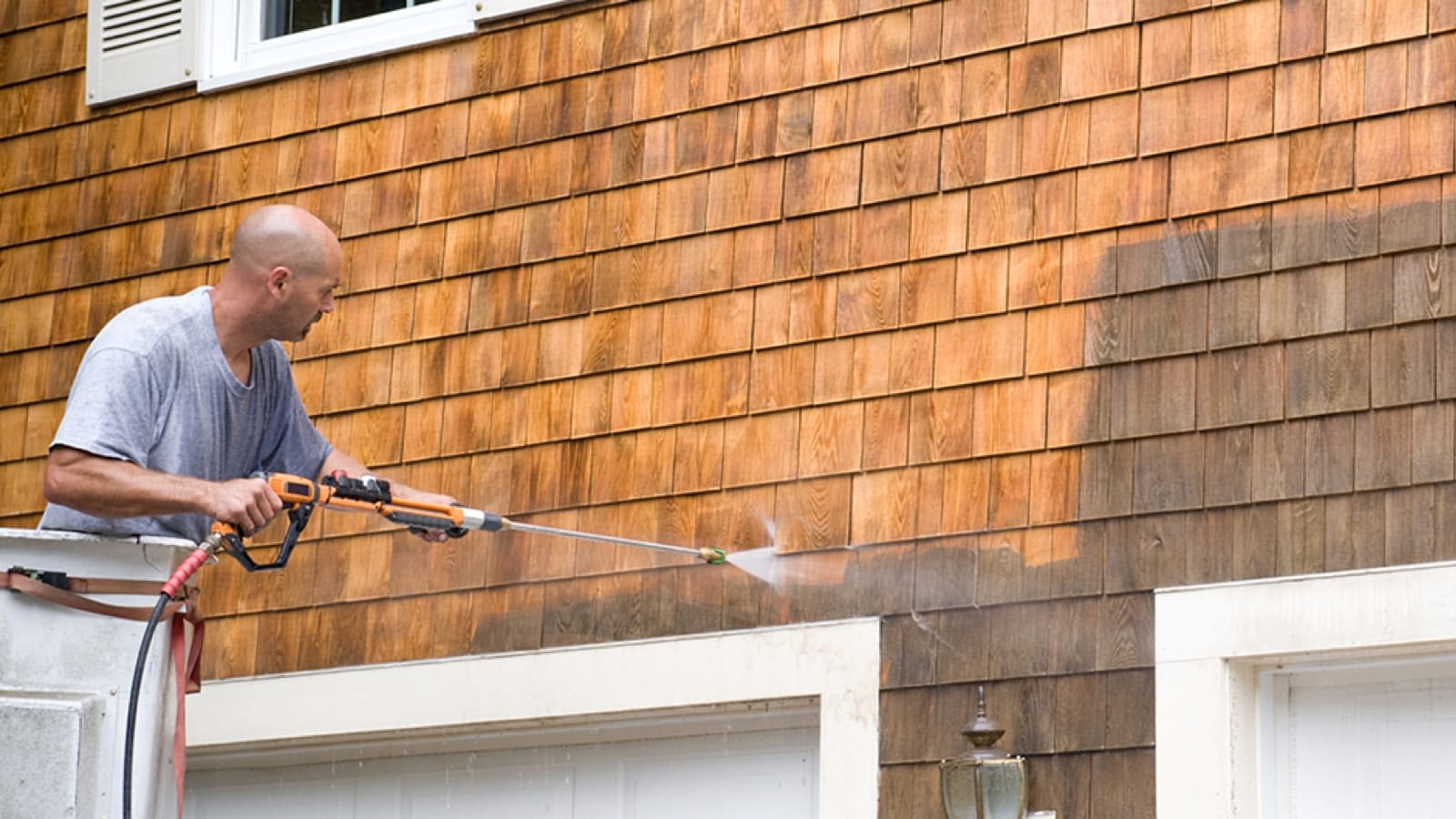
Switching up your home’s exterior siding is a bold statement… and a big decision. When starting your research, a few factors to consider are curb appeal, maintenance, weather conditions, durability, and – of course – your budget.
Here’s the good news: According to Remodeling Magazine, homeowners recoup 76% of the cost of new siding when they go to sell their home.
Here’s what to know about exterior siding options and how to make the right decision.
What siding is best for your house?
Drive around and see what homes you like – and, more importantly, don’t like. Note the siding types and color combinations. Take a look at your roof, shutters, and home accents to see what will complement the features of your home.
You want your home to fit into the streetscape without duplicating your immediate neighbors’ selections.
Also, be sure to check if your neighborhood has any restrictions before making a decision. Some communities or homeowners associations will regulate the siding colors and building materials, so it is important to find out if there are any limitations before you start shopping.
What are the different types of siding?
These days, you have lots of options. Here are 5 popular choices.
Vinyl House Siding
The most widely used material on home exteriors is vinyl. That’s for good reason: Vinyl siding is durable, and it’s typically under warranty for 30-40 years after installation. Available in an insulated version, vinyl siding has the potential to raise your home’s energy efficiency and help you cut down on heating and cooling costs.
Vinyl is easy to maintain, requiring only an annual cleaning with hose or power washer. Even better, color options are almost limitless. Panels generally come with the color infused with the vinyl itself so it cannot flake or chip off.
One downside to consider: Vinyl has been known to warp in extreme heat.
Fiber Cement Siding
Fiber cement is a popular composite siding option. Made from a combination of substances such as wood fiber, sand, clay, and cement, this material is designed to mimic just about any other siding material. Fiber cement siding can look like wood lap siding boards, cedar shingles, and wood shake. Fiber cement is known for its longevity, typically a 30-50-year lifespan. Like vinyl, it is available in virtually unlimited color options.
One downside to fiber cement is that it will require regular painting and caulking to maintain its appearance. Plus, due to its weight, installation can be a little trickier and require special training.
Natural Wood Siding
If you’re considering natural wood siding, you have several to choose from. Popular woods include cypress, pine, spruce, and cedar. In addition, wood offers a variety of styles such as lap, shingle, shake, tongue and groove, board and batten, and bevel.
Wood siding requires painting or staining, offering a unique streetscape option. This biodegradable option also makes it an environmentally friendly choice to consider. If maintained, it can last for decades.
A note of caution with this choice: Wood can be susceptible to insects and damage from weather elements.
Engineered Wood Siding
Made of wood fibers and exterior-grade resins, engineered wood siding is a less expensive alternative to real wood siding. Built to mimic the look and feel of natural wood siding, it offers less maintenance hassle and more resistance to insects. Plus, it comes already primed or painted in a wide range of colors. The resin surface means that it doesn’t peel or chip as quickly as real wood, although it can crack and fade over time.
Metal House Siding
Available in steel, aluminum, copper, and zinc, metal is a more expensive siding option that has a lot of benefits. Metal siding cannot mold or rot, unlike other siding with the potential for water damage. Known for its low maintenance, steel siding’s lack of color fading puts it at an advantage over vinyl and fiber cement.
Metal is relatively eco-friendly, since each panel is precisely cut with little waste material. Plus insects cannot find a home in metal siding, while other siding types may require periodic spraying of insecticide. However, like all metal, this siding can dent.
How much does it cost to side a house?
Siding pricing depends on the material you choose.
Vinyl siding is typically considerably less expensive than other siding options. Depending on quality, vinyl pricing ranges from $2 to $7 per square foot installed. You should plan to budget $4 to $6 per square foot installed.
Regardless of the material you chose, houses with bump outs, trim, extensions, or complicated corners will increase installation costs. If you plan to remove and dispose of your current siding, that typically costs extra too. Geographic location will also impact your cost: Labor varies by region, so be sure to get several quotes before you commit.
How to get the right insurance coverage for your siding
Home renovations can be fun – when they’re on your terms. If you have damage from something like a storm, you may face unplanned home repair projects. No one wants the stress of wondering: Is this covered under my homeowners policy?
When it comes to being helpful, that’s where we shine. With ERIE, every policy comes with your own local, independent insurance agent. By getting to know you, your agent can help you customize your policy for that perfect fit – and help you understand what it covers in case the unexpected happens.
Learn more about homeowners insurance or talk to your local agent to get the conversation started.

A better insurance experience starts with ERIE.
Haven’t heard of us? Erie Insurance started with humble beginnings in 1925 with a mission to emphasize customer service above all else. Though we’ve grown to reach the Fortune 500 list, we still haven’t lost the human touch.
Contact Hrenko Insurance Agency, Inc. today to experience the ERIE difference for yourself.
